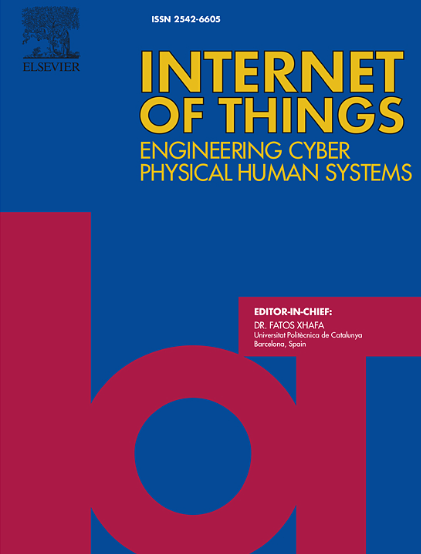在多无人机辅助物联网应用中安全数据收集的信息最小化时代
IF 7.6
3区 计算机科学
Q1 COMPUTER SCIENCE, INFORMATION SYSTEMS
引用次数: 0
摘要
无人机(uav)已成为物联网(IoT)应用中数据收集的一种有前途的解决方案,特别是在传统基础设施不可用或不可靠的情况下。在提供安全数据收集的同时最小化信息时代(AoI)对于延迟敏感的应用程序至关重要。然而,安全的数据收集会给资源受限的物联网设备和无人机带来相当大的能量和延迟开销。本文提出了一种新的混合整数规划(MIP)模型,以最小的无人机数量来最小化平均AoI。与以往的工作不同,该模型在很大程度上忽略了物联网的安全和能源约束成本,该模型集成了无人机和物联网设备上加密方法的延迟和能源成本。群体选择算法(CSA)是一种元启发式算法,用于克服大规模物联网应用中MIP模型的计算复杂性。分析了基于属性的加密(ABE)方法,如密钥策略ABE (KP-ABE)和密文策略ABE (CP-ABE)对AoI最小化和所需无人机最少数量的影响。结果表明,KB-ABE-YCT方法在无人机数量较少的情况下具有较好的AoI最小化效果。本文章由计算机程序翻译,如有差异,请以英文原文为准。
Age of Information minimization for secure data collection in multi UAV-assisted IoT applications
Unmanned Aerial Vehicles (UAVs) have emerged as a promising solution for data collection in Internet of Things (IoT) applications, particularly in scenarios where traditional infrastructure is unavailable or unreliable. Minimizing the Age of Information (AoI) while providing secure data collection is crucial for delay-sensitive applications. However, secure data collection introduces considerable energy and delay overhead for both resource-constrained IoT devices and UAVs. This paper proposes a novel mixed integer programming (MIP) model to minimize the average AoI with the minimum number of UAVs. Unlike previous works that largely disregard the costs of security and energy constraints of IoT, the proposed model integrates the delay and energy costs of encryption methods on both UAVs and IoT devices. Colonial Selection Algorithm (CSA) is developed as a metaheuristic to overcome the computational complexity of the MIP model in large-scale IoT applications. The impact of attribute-based encryption (ABE) methods, such as Key-Policy ABE (KP-ABE) and Ciphertext-Policy ABE (CP-ABE), on AoI minimization and the minimum number of required UAVs is analyzed. The results demonstrate that the KB-ABE-YCT method performs better in minimizing AoI with fewer UAVs.
求助全文
通过发布文献求助,成功后即可免费获取论文全文。
去求助
来源期刊

Internet of Things
Multiple-
CiteScore
3.60
自引率
5.10%
发文量
115
审稿时长
37 days
期刊介绍:
Internet of Things; Engineering Cyber Physical Human Systems is a comprehensive journal encouraging cross collaboration between researchers, engineers and practitioners in the field of IoT & Cyber Physical Human Systems. The journal offers a unique platform to exchange scientific information on the entire breadth of technology, science, and societal applications of the IoT.
The journal will place a high priority on timely publication, and provide a home for high quality.
Furthermore, IOT is interested in publishing topical Special Issues on any aspect of IOT.
 求助内容:
求助内容: 应助结果提醒方式:
应助结果提醒方式:


